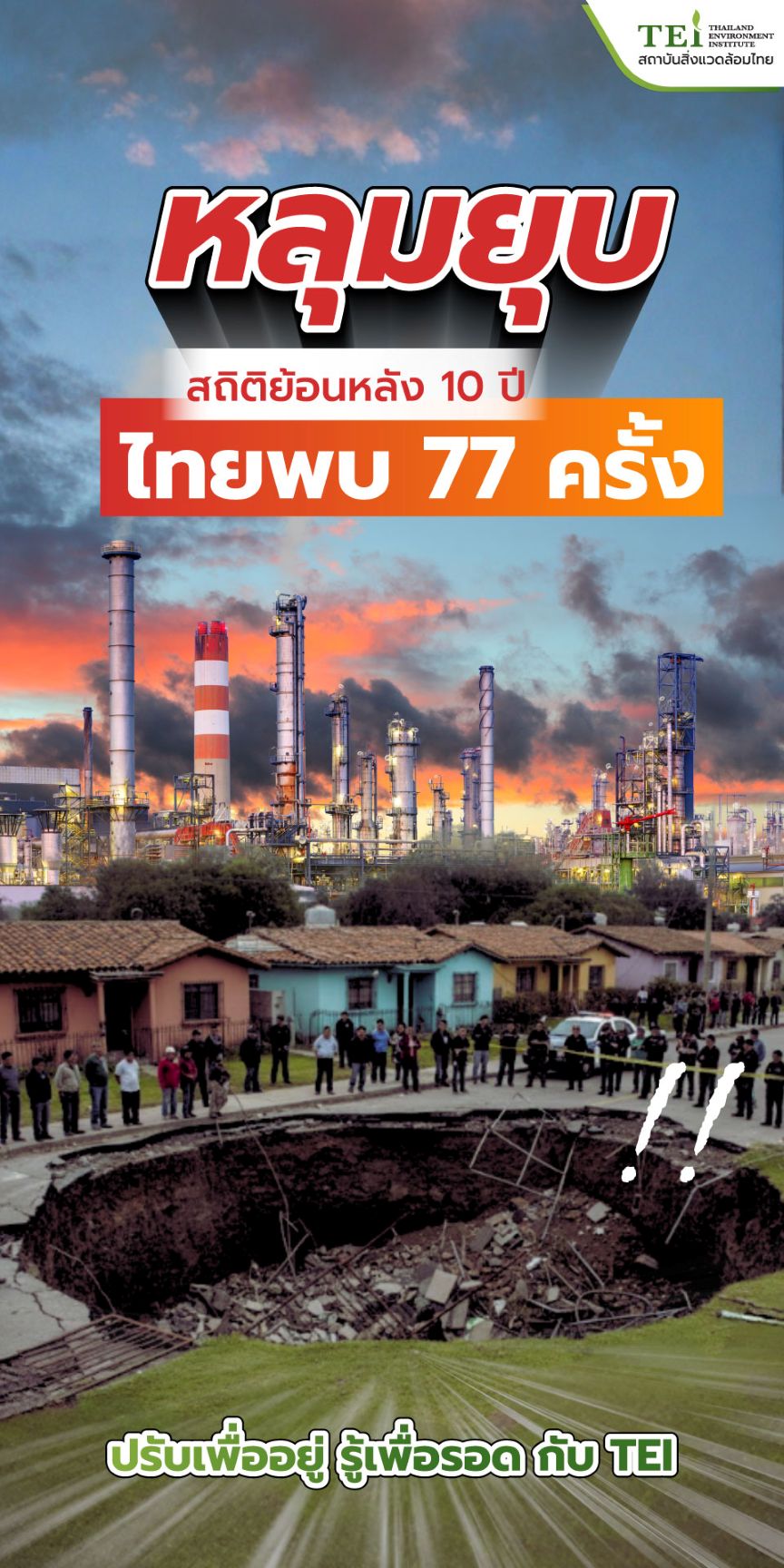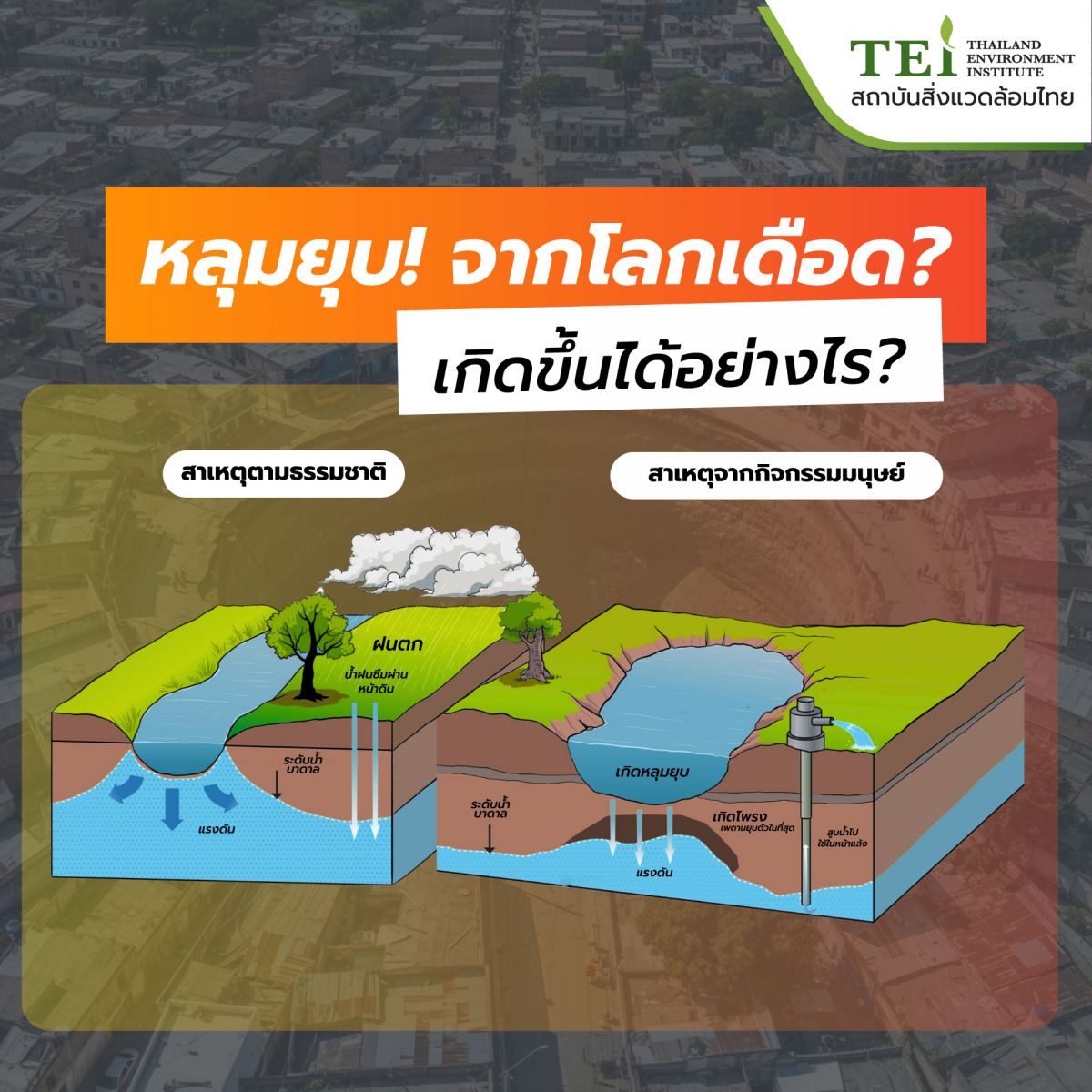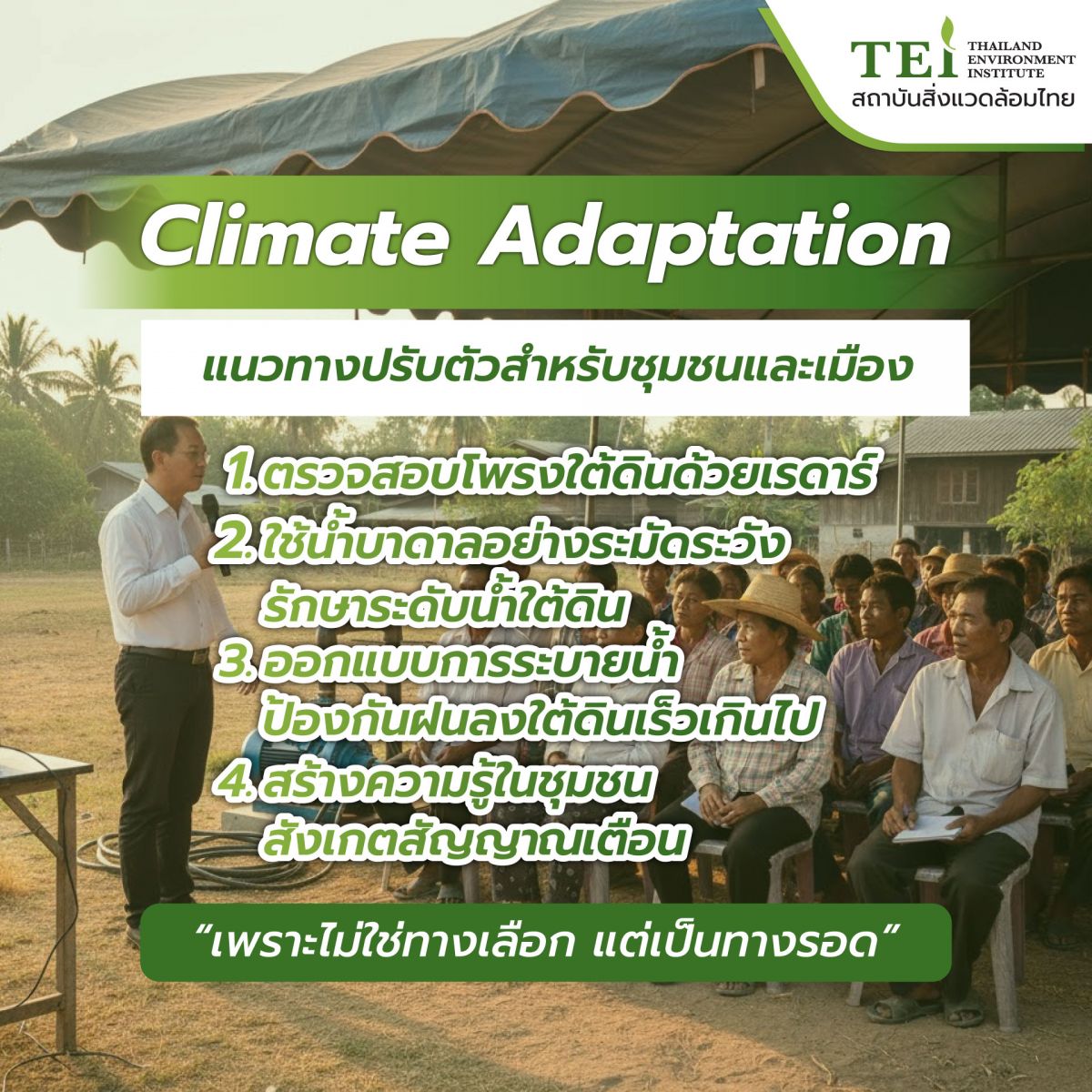
Thematic Areas: Climate Adaptation
In the past 10 years, a total of 77 sinkholes have been reported in Thailand, averaging about 7 occurrences per year. The area with the most reported sinkholes is Nan province.
In addition to Nan province, several other regions are classified as sinkhole-risk areas due to geological conditions that are conducive to the formation of underground cavities, including:
What causes ‘sinkholes’?
A ‘sinkhole’ is a phenomenon that can result from several causes, but the most critical factor is often linked to ‘subsurface stability,’ especially in areas with underground limestone. The primary cause of natural sinkholes is when underground limestone is slowly dissolved by slightly acidic rainwater, creating a large cavity. When there is weight or pressure from above, this cavity can collapse suddenly, causing the ground to give way abruptly. However, the dissolution of limestone is not the only cause of ‘sinkholes.’ Currently, there is another variable: Climate Change, or ‘Global Boiling.’
Climate Change, or ‘Global Boiling,’ is emerging as a new threat, indicating that changes in the climate are a primary ‘trigger.’ This is because when rain does not fall seasonally, and some years experience unusually frequent and severe droughts, people in many areas are forced to rely on pumping groundwater for consumption and agriculture. But the pumping of groundwater to solve Thailand's drought problems over the past several decades has had an unavoidable impact: it has become the origin of the ‘sinkhole’ problem caused by groundwater extraction.
How do ‘sinkholes’ from groundwater pumping occur?
When we draw water from the ground, the trade-off is a loss of subsurface stability. The mass of soil and water that once supported the underground structure is removed, creating an underground void. This itself is a geological time bomb, waiting for the soil layers and structure to weaken or for another trigger to occur, risking an eventual collapse into a ‘sinkhole’ caused by groundwater pumping.

The Thailand Environment Institute (TEI) perceives that the uncertainty of global boiling, combined with pre-existing drought conditions, has led to a reliance on groundwater pumping. This method of combating drought has become a ‘chronic problem’ that increases the likelihood of sinkholes. At the same time, unseasonably heavy rainfall is another factor that adds weight and erodes the subsoil, making sinkholes more severe than ever. Our only path forward is “Climate Adaptation.” While we may not be able to control the balance of a changing world, we can ‘adapt to live, know to survive’ to prevent the danger of sinkholes caused by global boiling. This adaptation is not just an “option” but a critical “path to survival” essential for human existence.
TEI points out that there are four levels of climate change adaptation: individual, community and urban, national, and international. For the community and urban level, TEI suggests a guideline to ‘adapt to live, know to survive’ the threat of ‘sinkholes’ from groundwater pumping through the following four approaches:

TEI believes that ‘Adapt to live, know to survive’ will become an intellectual tool for the Thai people, preparing them to face an unpredictably changing world, especially due to Climate Change or ‘Global Boiling.’
‘Sinkholes’ are a reflection from nature telling us that the world is accelerating, running erratically, and is no longer the same. The "Adapt to live, know to survive" approach is the path that will enable our communities to lead safe and secure lives in this drastically changing world.
Share: